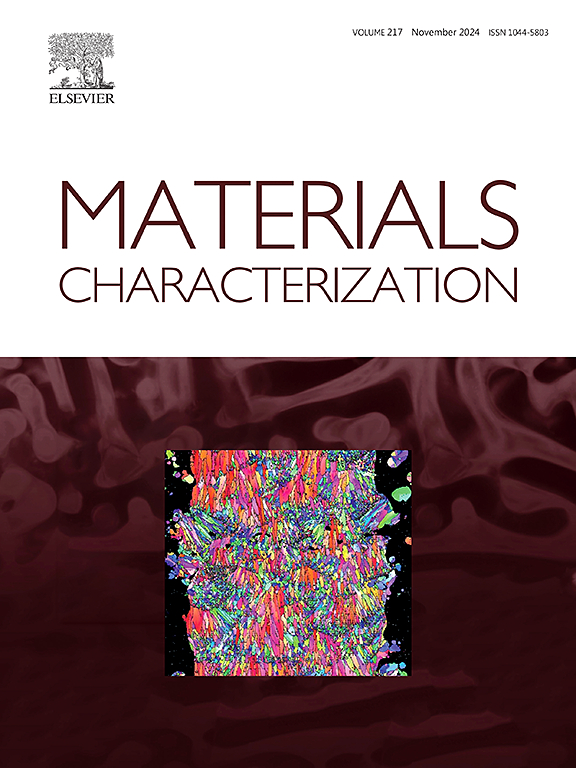The insight effect of texture components on the recrystallization behavior of MoRe alloy
IF 4.8
2区 材料科学
Q1 MATERIALS SCIENCE, CHARACTERIZATION & TESTING
引用次数: 0
Abstract
Molybdenum alloys are promising materials for high-temperature gas-cooled reactor fuel cladding due to their excellent performance at elevated temperatures, favorable mechanical properties, corrosion resistance, and low neutron absorption cross-section. However, their high melting point and inherent hardness require annealing to improve processability. This study investigates the effects of vacuum annealing on the microstructure and texture evolution of rotary swaged Mo![]() Re alloys. The as-swaged alloy exhibits a fibrous structure with elongated grains along the axial direction (AD). Annealing at 1200 °C results in a bimodal microstructure, with both deformed and recrystallized grains, indicating a partially recrystallized (PRX) state. Furthermore, annealing at 1300 °C leads to a completely recrystallized (CRX) microstructure. The recrystallization mechanism is primarily driven by subgrains coalescence. The texture of the rotary swaged Mo
Re alloys. The as-swaged alloy exhibits a fibrous structure with elongated grains along the axial direction (AD). Annealing at 1200 °C results in a bimodal microstructure, with both deformed and recrystallized grains, indicating a partially recrystallized (PRX) state. Furthermore, annealing at 1300 °C leads to a completely recrystallized (CRX) microstructure. The recrystallization mechanism is primarily driven by subgrains coalescence. The texture of the rotary swaged Mo![]() Re alloy is dominated by a strong 〈101〉//AD fiber texture, accompanied by a weaker 〈001〉//AD texture. After recrystallization, the intensity of the <101>//AD texture decreases, while the <001>//AD texture becomes more prominent. These texture changes suggest that the <001>//AD texture promotes recrystallization, whereas the <101>//AD texture hinders it. The evolution of the recrystallization texture is attributed to the preferential growth of <001>//AD grains and stress-driven grain rotation. These findings provide valuable insights for optimizing the heat treatment process of rotary swaged Mo
Re alloy is dominated by a strong 〈101〉//AD fiber texture, accompanied by a weaker 〈001〉//AD texture. After recrystallization, the intensity of the <101>//AD texture decreases, while the <001>//AD texture becomes more prominent. These texture changes suggest that the <001>//AD texture promotes recrystallization, whereas the <101>//AD texture hinders it. The evolution of the recrystallization texture is attributed to the preferential growth of <001>//AD grains and stress-driven grain rotation. These findings provide valuable insights for optimizing the heat treatment process of rotary swaged Mo![]() Re alloys.
Re alloys.
求助全文
约1分钟内获得全文
求助全文
来源期刊

Materials Characterization
工程技术-材料科学:表征与测试
CiteScore
7.60
自引率
8.50%
发文量
746
审稿时长
36 days
期刊介绍:
Materials Characterization features original articles and state-of-the-art reviews on theoretical and practical aspects of the structure and behaviour of materials.
The Journal focuses on all characterization techniques, including all forms of microscopy (light, electron, acoustic, etc.,) and analysis (especially microanalysis and surface analytical techniques). Developments in both this wide range of techniques and their application to the quantification of the microstructure of materials are essential facets of the Journal.
The Journal provides the Materials Scientist/Engineer with up-to-date information on many types of materials with an underlying theme of explaining the behavior of materials using novel approaches. Materials covered by the journal include:
Metals & Alloys
Ceramics
Nanomaterials
Biomedical materials
Optical materials
Composites
Natural Materials.
 求助内容:
求助内容: 应助结果提醒方式:
应助结果提醒方式:


